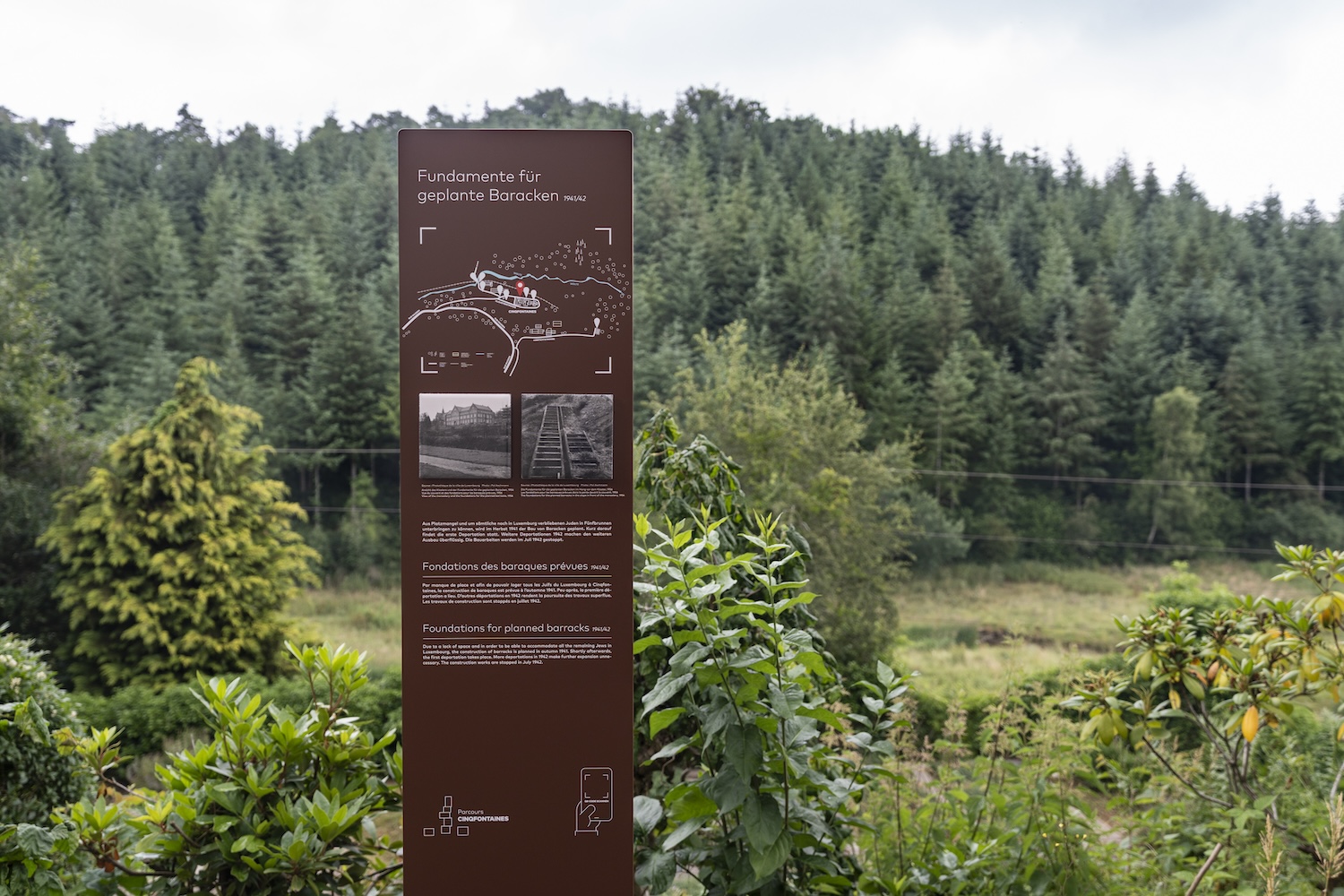
In autumn 1941, at the suggestion of the Jewish Consistory and with the permission of the Gestapo, the construction of barracks begins. A total of nine single level concrete barracks are planned. The consistory wanted to counteract the lack of space and hoped to be able to permanently accommodate more Jews here in order to save them from deportation. This hope is shattered in July 1942 when about 205 Jews from Luxembourg – 98 of them from Cinqfontaines – are deported to the East. As a result, the construction of the barracks is stopped. After the war, the concrete foundations with a total volume of over 600 cubic meters are partly built over, while part is demolished. Today, parts of the foundations of these planned barracks can still be seen in Cinqfontaines.
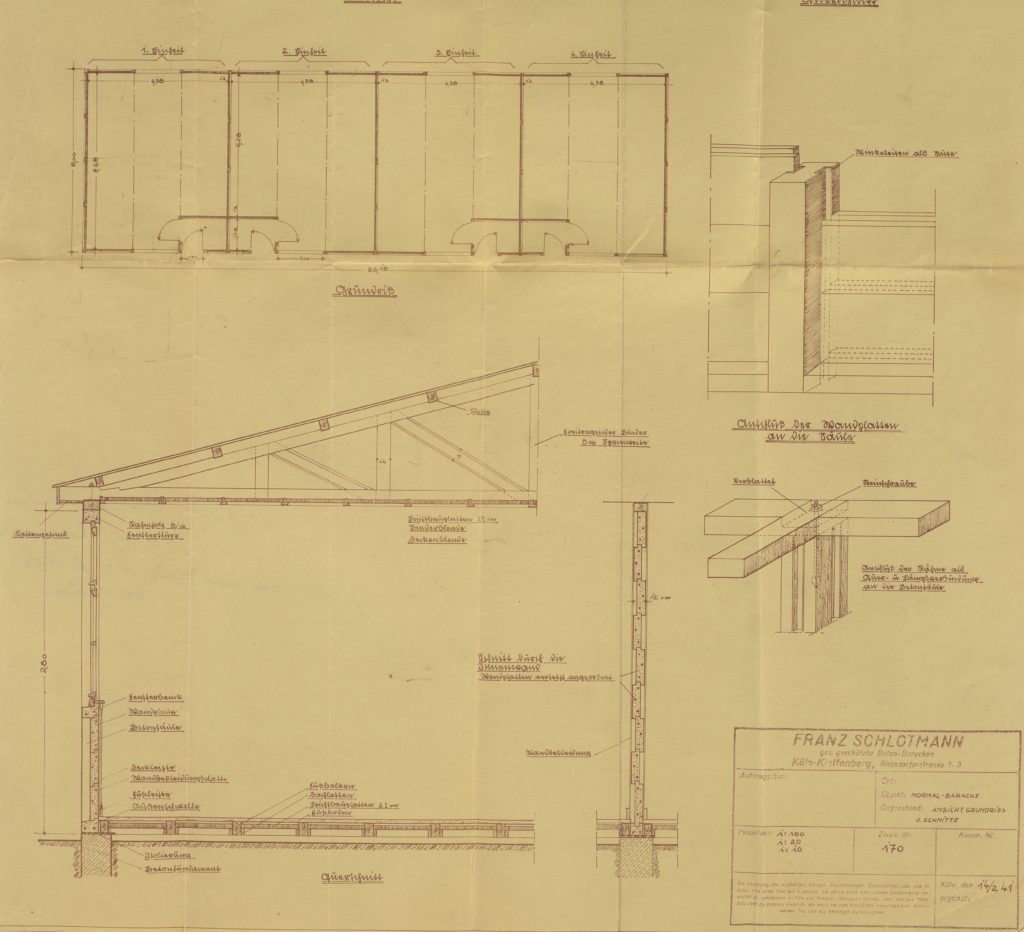
Source : Archives Consistoire israélite
Construction plan of the planned barracks
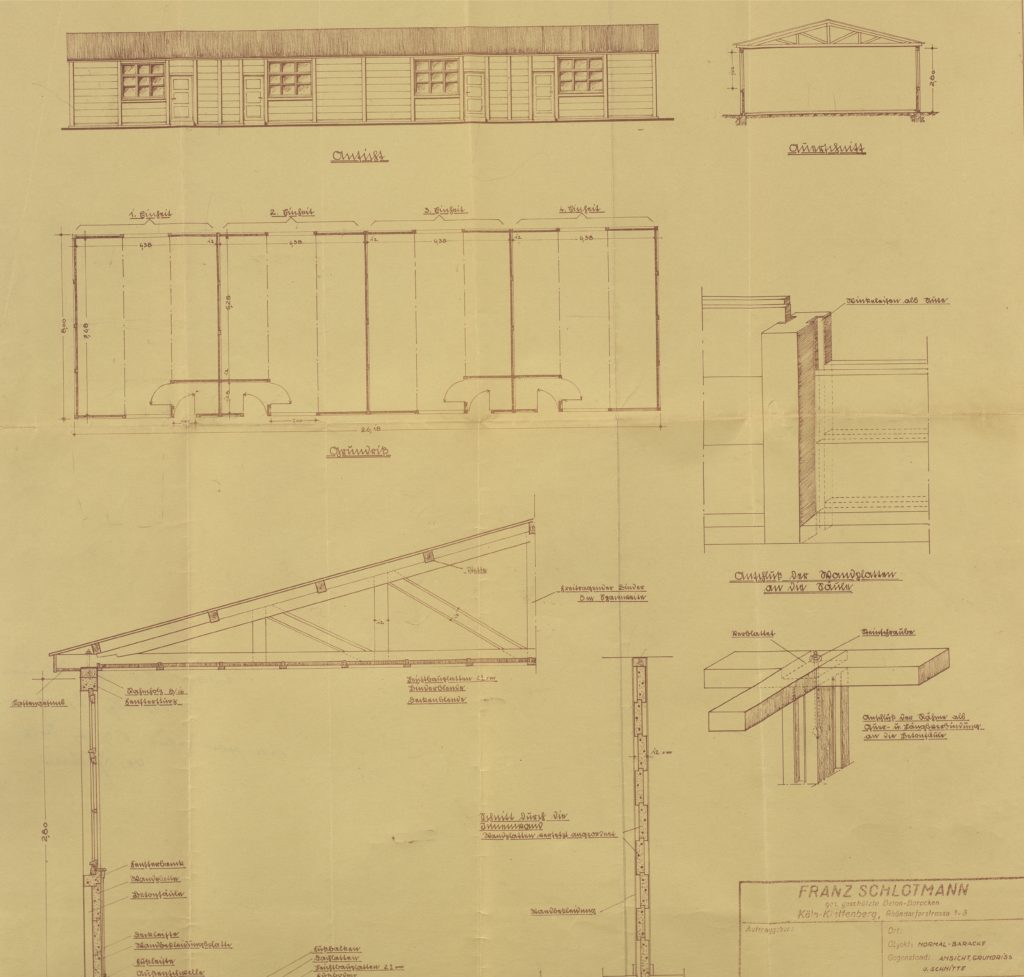
Source : Archives Consistoire israélite
Construction plan of the planned barracks
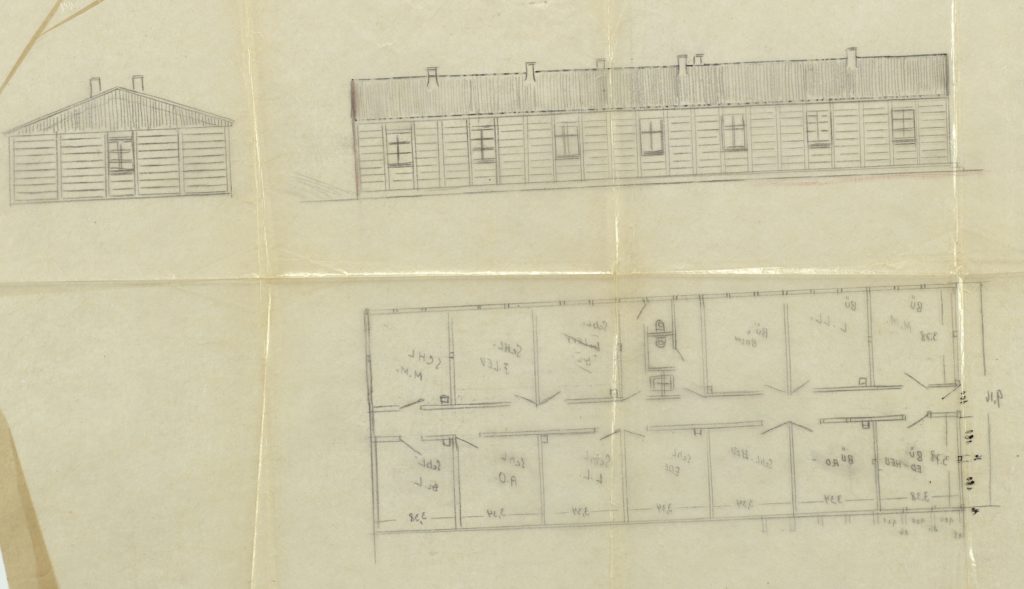
Source: Archives Consistoire israélite
Sketch and floor plan for the planned barracks
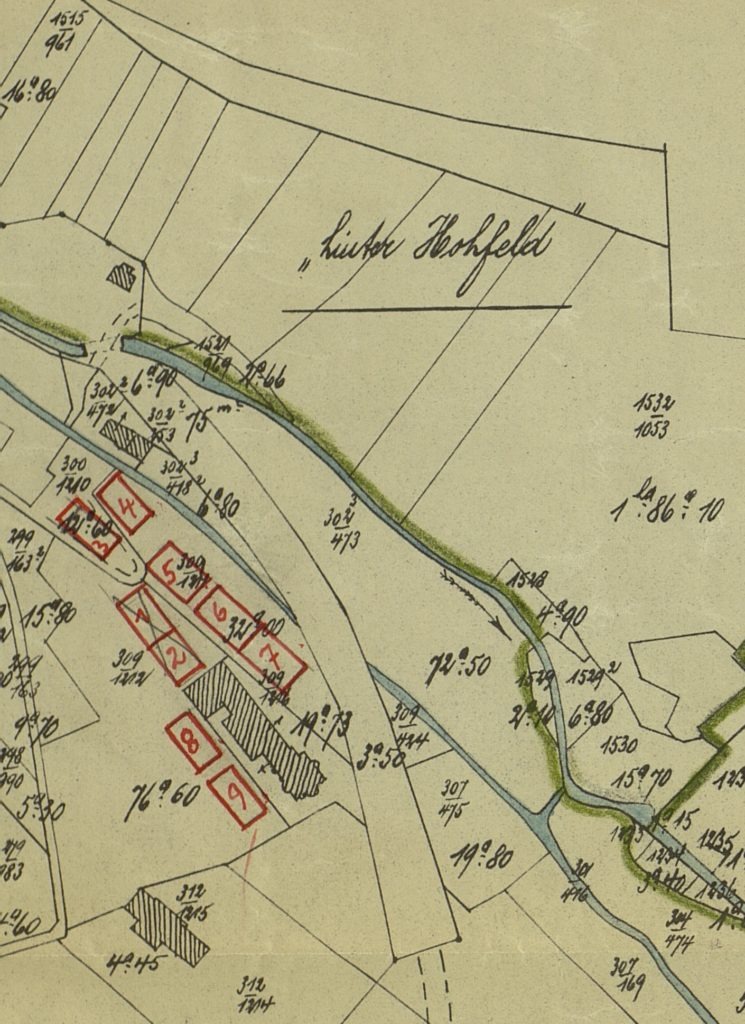
Source: Archives Consistoire israélite
Extract of the cadastral plan with the locations of the planned barracks
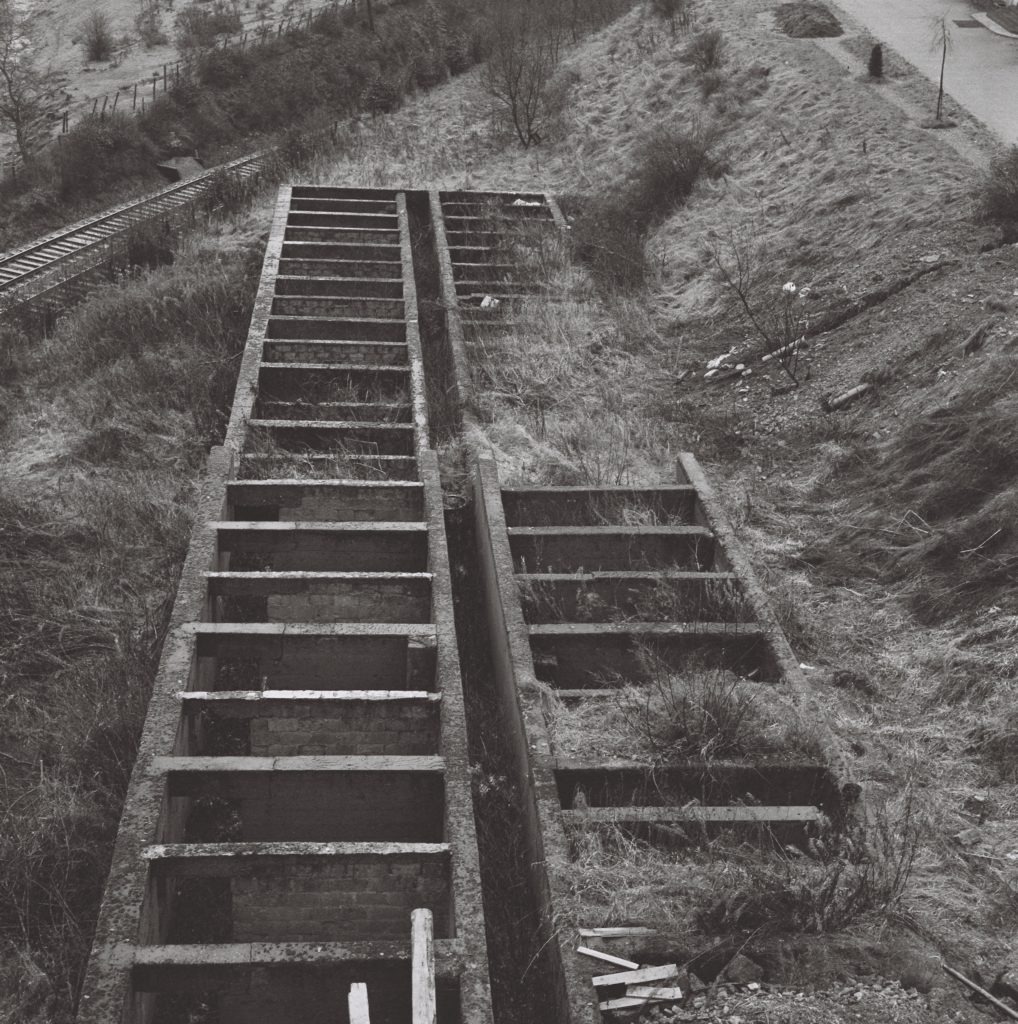
Source : Photothèque de la Ville de Luxembourg / Photographe : Pol Aschmann / Date : 1956
The foundations for the planned barracks in the slope in front of the monastery
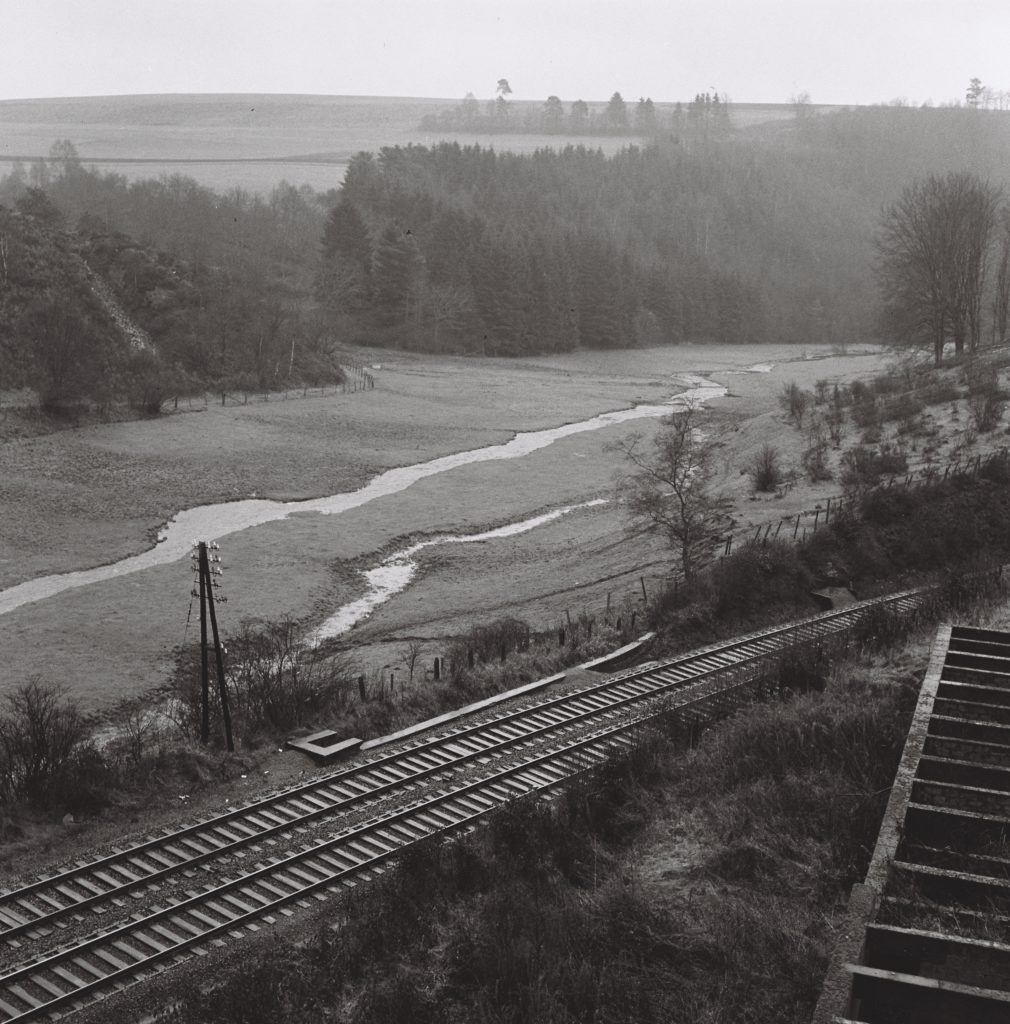
Source : Photothèque de la Ville de Luxembourg / Photographe : Pol Aschmann / Date : 1956
The foundations for the planned barracks in the slope in front of the monastery
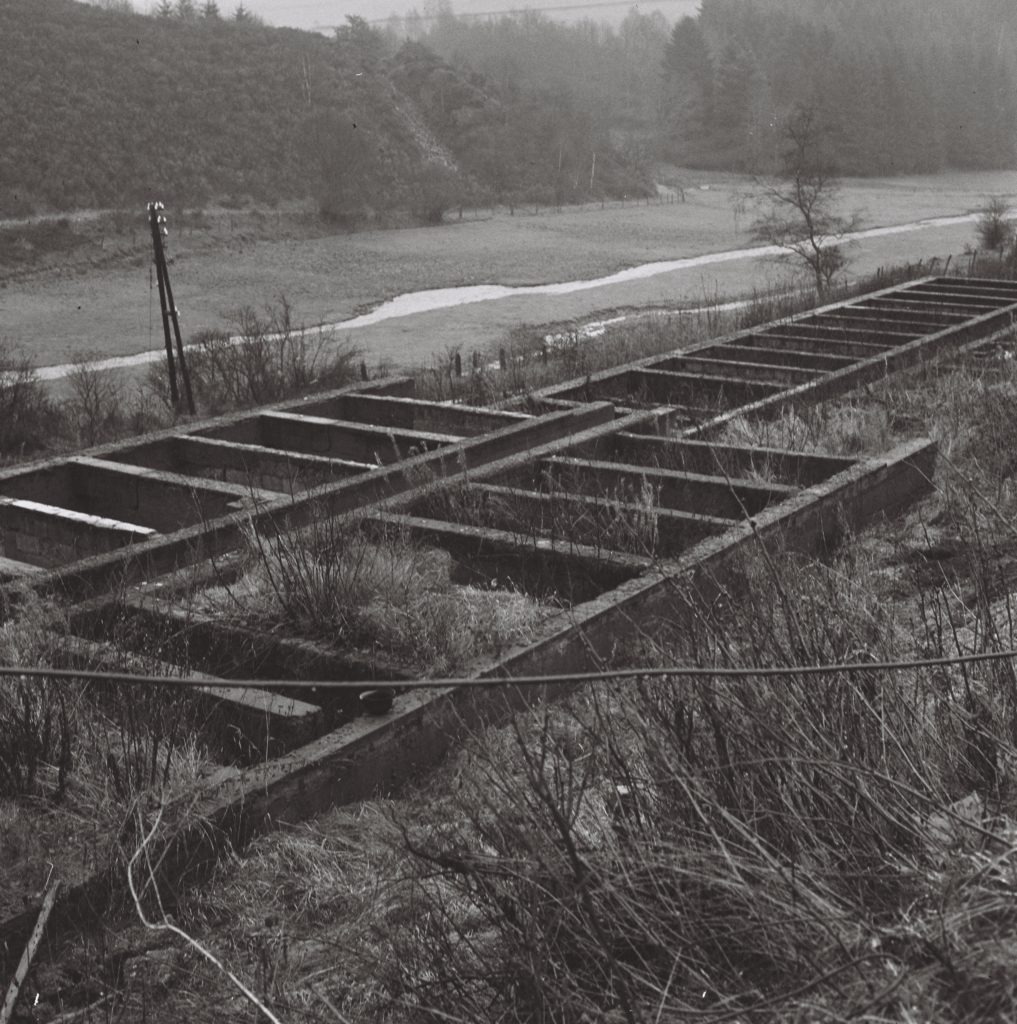
Source : Photothèque de la Ville de Luxembourg / Photographe : Pol Aschmann / Date : 1956
The foundations for the planned barracks in the slope in front of the monastery
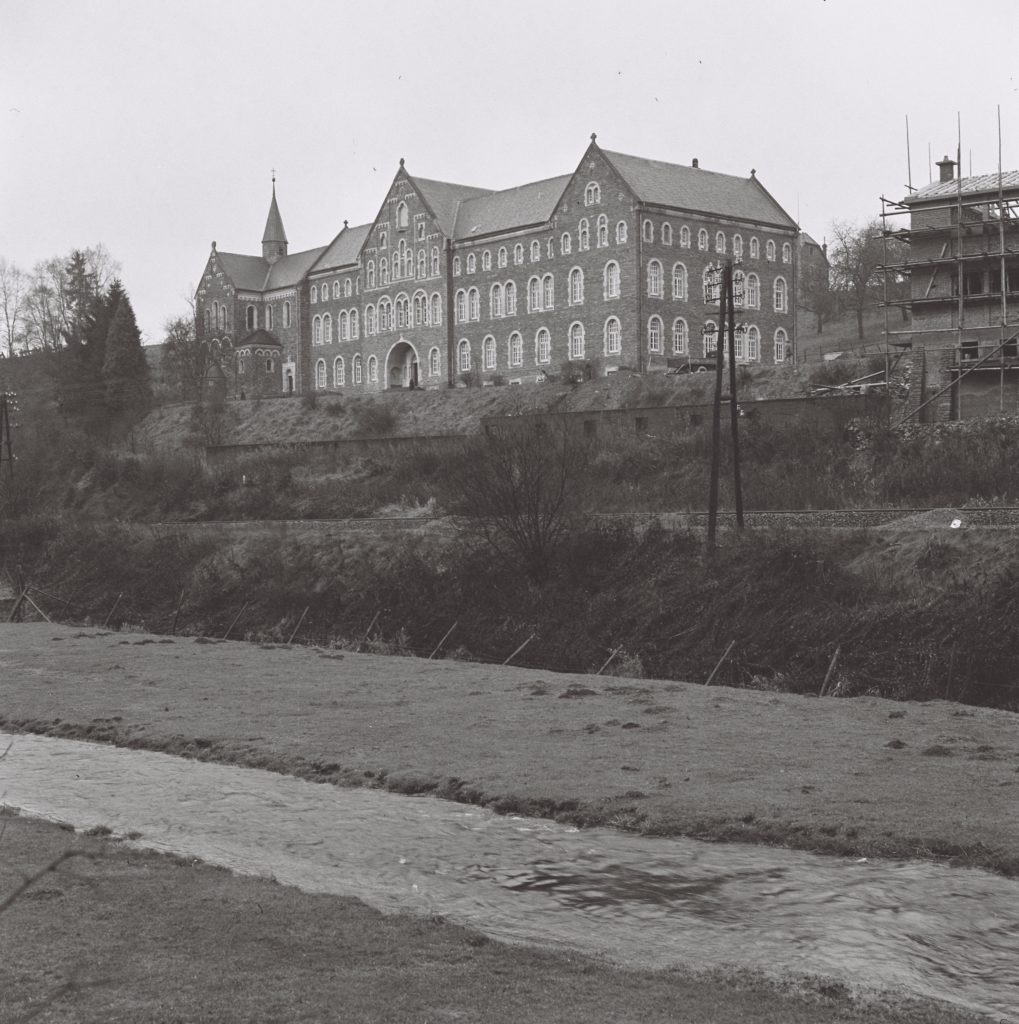
Source : Photothèque de la Ville de Luxembourg / Photographe : Pol Aschmann / Date : 1956
View of the monastery and the foundations for the planned barracks
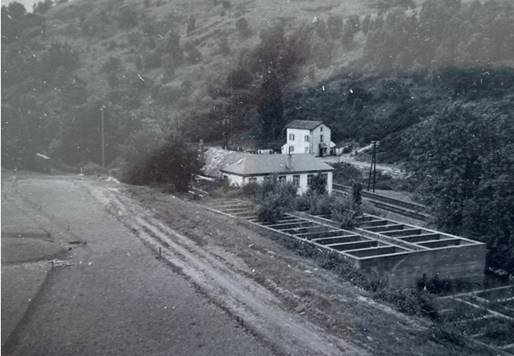
Source: Archives des Prêtres du Sacré-Cœur
Foundations of the barracks where the Home Léon Dehon stands today, before 1956
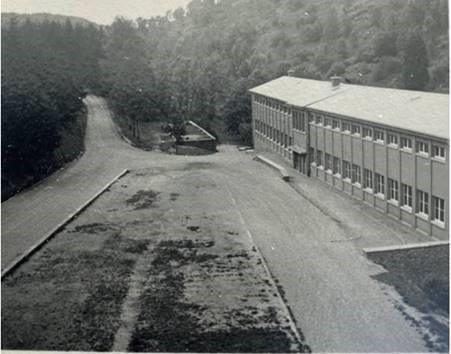
Source: Archives des Prêtres du Sacré-Cœur
At the back: Foundation of a barrack where the Holocaust Monument stands today, about 1957
